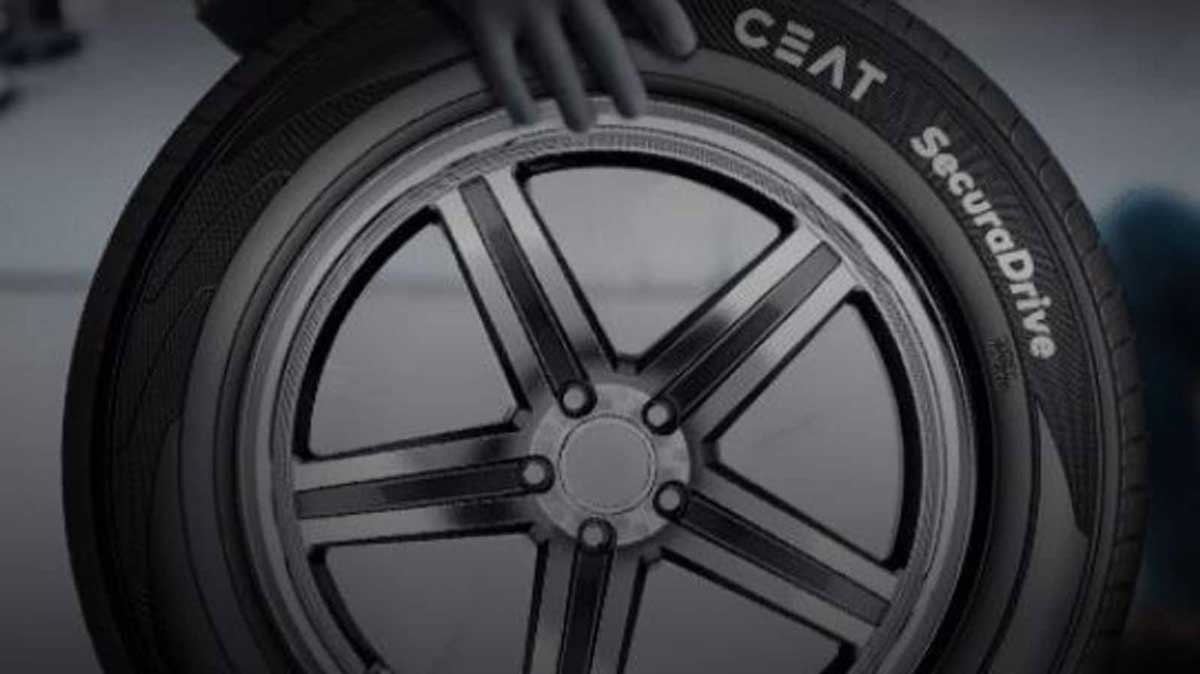With several countries of the world slipping into a recession, tyre maker Ceat is planning to invest in the off-highway tyres segment. Agricultural activity gets less impacted compared to industrial activity even during a recession, feels
Anant Goenka, MD, Ceat. highlights how continuous investments in digitisation has helped them improve outputs.
You recently got a manufacturing lighthouse certification by the World Economic Forum. What steps have you taken to improve efficiency?
We are the only tyre manufacturer in the world to receive this certification from the World Economic Forum. This is given to a select group of companies, or factories around the world, who have seen substantial efficiency or quality improvement using what they call Fourth Industrial Revolution (FIR) technologies. FIR has come about thanks to digitisation. At Ceat we wanted to grow in our international business, and our OEM customers were becoming more and more exacting in their specifications. They want to use more green materials. Making products according to specifications reduces the factory output. As a result, over the last three or four years we started this exercise that while we will use more green materials, we will not lose out on productivity. For example, in the last five years, our green material usage went up from 28 per cent to 57 per cent. We were able to improve our cycle time by 20 per cent (using FIR technologies), which means 20 per cent higher output. Our scrap or wastage went down by 47 per cent and energy consumption went down by 15 per cent. We saw an overall growth of 2.5-times with our customers during this period.
What is the outlook for 2023 in terms of growth etc?
In 2021, demand was hit due to the second wave, and in 2022, growth has come on a lower base. This year saw no major disruptions whether on the OEM side, the supply chain side or the customer demand side. Overall, there has been a 20 per cent growth overall in the tyre segment. Initial months of FY22 and FY23 had seen raw material prices – crude prices and rubber – going up substantially. Crude derivatives and rubber constitute around 95 per cent of our raw material prices. But, both these commodities have started to cool down – crude, for example, went up to $115/barrel and is now down at $80 per barrel. Margins should thus improve going forward in the next calendar year.
International growth is under pressure – because nearly two-thirds of the world is going into recession. In the domestic market, the growth will be good – commercial vehicles and passenger vehicles are doing well. Growth for the tyre segment will be standard, but raw material prices cooling down will help in margins.
Which segment are you bullish on in the domestic market?
Around 35 per cent of our sales comes from CVs, around 30 per cent from two-wheelers and around 20 per cent comes from passenger cars; and the balance would be farm etc. In the CV segment we have seen nearly 3-times growth in the last 12-months. This is demand from OEMs. This demand sustains. Passenger vehicles saw continuous growth with the chip shortage easing out. I expect two-wheeler demand would also revive as we have seen a normal monsoon etc. For 2023-24,we are looking to increase our market share in the passenger vehicle segment. We invested nearly Rs 20 billion in our Chennai facility, we put capacities in place. The demand in the OEM segment will play out in the replacement segment too – there is usually a two-year lag there.
Most of your capex of Rs 35 billion is done. Any further expansion plans this year?
Most of our capex is done, there is nothing new, and we are just doing the balance. The new investments of around Rs 3-4 billion is coming in the off-highway tyre segment now for us. We had announced this in the last quarter. We have around Rs 2-3 billion capex left to be done in Chennai, some capex in the two-wheeler tyre segment. But these are largely back-end capex that was announced earlier.
We have done a lot of work, invested around Rs 1 billion in digitalisation. We are saving a lot of investment as a result of this, because our efficiencies and outputs are improving, and this would help us to delay our capex. Machine learning, predictive analytics etc we are using heavily at our factories.
We can grow around 20 per cent without any capex.
With several countries going into recession, what kind of strategy do you plan to adopt for exports?
Everyone is talking about a recession in the US. The off-highway tyres, or largely farm tyres, are going to be very important for us in the export market. Even in a recessionary environment, agriculture gets less hit, compared to industrial activities. We are optimistic about growing in off-highway tyres. Europe is in a recession, the US may go in. Our capacities would take around a year, or a year and a half to come up, and hopefully by then most countries would also be out of recession.
See also:
We are launching new ‘Made for India’ tyres: Rajiv Poddar
Indian tyre industry expected to scale a turnover of INR 1 trillion




















